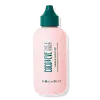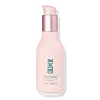What's inside
What's inside
 Key Ingredients
Key Ingredients

 Benefits
Benefits

 Concerns
Concerns

 Ingredients Side-by-side
Ingredients Side-by-side

Cyclopentasiloxane
EmollientDimethiconol
EmollientC15-19 Alkane
SolventCocos Nucifera Oil
MaskingParfum
MaskingOpuntia Ficus-Indica Extract
Skin ConditioningCarica Papaya Seed Oil
HumectantFicus Carica Fruit Extract
HumectantCarthamus Tinctorius Seed Oil
MaskingCitrus Medica Limonum Peel Extract
EmollientGarcinia Mangostana Fruit Extract
Skin ConditioningC10-18 Triglycerides
EmollientSodium Hyaluronate
HumectantTriolein
Skin ConditioningTocopheryl Acetate
AntioxidantGlyceryl Dioleate
EmollientBenzyl Salicylate
PerfumingLinalool
PerfumingCoumarin
PerfumingLimonene
PerfumingHexyl Cinnamal
PerfumingCyclopentasiloxane, Dimethiconol, C15-19 Alkane, Cocos Nucifera Oil, Parfum, Opuntia Ficus-Indica Extract, Carica Papaya Seed Oil, Ficus Carica Fruit Extract, Carthamus Tinctorius Seed Oil, Citrus Medica Limonum Peel Extract, Garcinia Mangostana Fruit Extract, C10-18 Triglycerides, Sodium Hyaluronate, Triolein, Tocopheryl Acetate, Glyceryl Dioleate, Benzyl Salicylate, Linalool, Coumarin, Limonene, Hexyl Cinnamal
Water
Skin ConditioningCetearyl Alcohol
EmollientBehentrimonium Chloride
PreservativeCocos Nucifera Oil
MaskingPersea Gratissima Oil
Skin ConditioningButyrospermum Parkii Butter
Skin ConditioningCitric Acid
BufferingPanthenol
Skin ConditioningPotassium Sorbate
PreservativeSodium Benzoate
MaskingQuaternium-80
Parfum
MaskingPolyamide-2
Glycerin
HumectantMoringa Oleifera Seed Extract
Skin ConditioningPropanediol
SolventGlyceryl Stearate
EmollientPhospholipids
Skin ConditioningCocos Nucifera Water
MaskingTetrasodium Glutamate Diacetate
Cocos Nucifera Fruit Juice
EmollientPolyglyceryl-10 Oleate
Skin ConditioningPolyglyceryl-10 Dioleate
EmulsifyingSodium Stearoyl Lactylate
EmulsifyingGlyceryl Undecylenate
EmollientGlyceryl Caprylate
EmollientFicus Carica Fruit Extract
HumectantHydrolyzed Rice Protein
Skin ConditioningCaramel
Cosmetic ColorantWater, Cetearyl Alcohol, Behentrimonium Chloride, Cocos Nucifera Oil, Persea Gratissima Oil, Butyrospermum Parkii Butter, Citric Acid, Panthenol, Potassium Sorbate, Sodium Benzoate, Quaternium-80, Parfum, Polyamide-2, Glycerin, Moringa Oleifera Seed Extract, Propanediol, Glyceryl Stearate, Phospholipids, Cocos Nucifera Water, Tetrasodium Glutamate Diacetate, Cocos Nucifera Fruit Juice, Polyglyceryl-10 Oleate, Polyglyceryl-10 Dioleate, Sodium Stearoyl Lactylate, Glyceryl Undecylenate, Glyceryl Caprylate, Ficus Carica Fruit Extract, Hydrolyzed Rice Protein, Caramel
 Reviews
Reviews

Alternatives
Ingredients Explained
These ingredients are found in both products.
Ingredients higher up in an ingredient list are typically present in a larger amount.
Cocos Nucifera Oil is obtained from the kernels of the coconut fruit. In other words, this is coconut oil.
Coconut Oil is rich in fatty acids with lauric acid making up the majority of these. It also contains linoleic acid. Due to this high fatty acid content, coconut oil helps trap moisture and soften skin.
Despite being antibacterial, coconut oil may not be great for acne-prone skin. It is comedogenic and may clog pores. This ingredient may not be safe for malassezia or fungal acne.
Note: Coconut Oil should not replace your sunscreen for UV protection. Studies show it only blocks about 20% of UV.
This oil is non-volatile and has a light scent.
The term 'fragrance' is not regulated in many countries. In many cases, it is up to the brand to define this term. For instance, many brands choose to label themselves as "fragrance-free" because they are not using synthetic fragrances. However, their products may still contain ingredients such as essential oils that are considered a fragrance.
Learn more about Cocos Nucifera OilFicus Carica Fruit Extract comes from the fruit known as the fig. Figs are rich in antioxidants and helps hydrate the skin.
Figs also contain fatty acids and Vitamins A, B1, and B2.
As a humectant, figs are able to draw moisture from the air to your skin. This helps keep your skin hydrated.
Learn more about Ficus Carica Fruit ExtractParfum is a catch-all term for an ingredient or more that is used to give a scent to products.
Also called "fragrance", this ingredient can be a blend of hundreds of chemicals or plant oils. This means every product with "fragrance" or "parfum" in the ingredients list is a different mixture.
For instance, Habanolide is a proprietary trade name for a specific aroma chemical. When used as a fragrance ingredient in cosmetics, most aroma chemicals fall under the broad labeling category of “FRAGRANCE” or “PARFUM” according to EU and US regulations.
The term 'parfum' or 'fragrance' is not regulated in many countries. In many cases, it is up to the brand to define this term.
For instance, many brands choose to label themselves as "fragrance-free" because they are not using synthetic fragrances. However, their products may still contain ingredients such as essential oils that are considered a fragrance by INCI standards.
One example is Calendula flower extract. Calendula is an essential oil that still imparts a scent or 'fragrance'.
Depending on the blend, the ingredients in the mixture can cause allergies and sensitivities on the skin. Some ingredients that are known EU allergens include linalool and citronellol.
Parfum can also be used to mask or cover an unpleasant scent.
The bottom line is: not all fragrances/parfum/ingredients are created equally. If you are worried about fragrances, we recommend taking a closer look at an ingredient. And of course, we always recommend speaking with a professional.
Learn more about Parfum